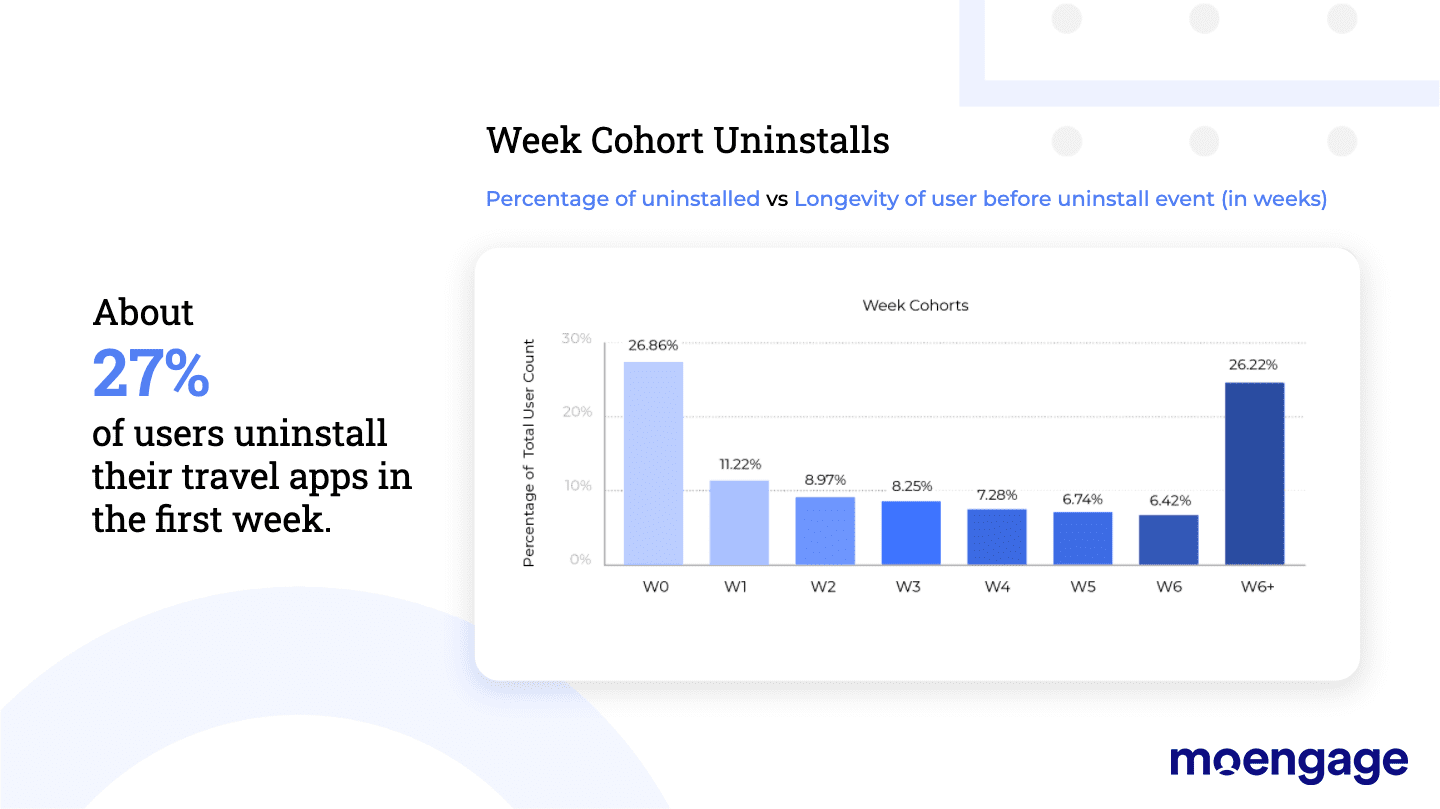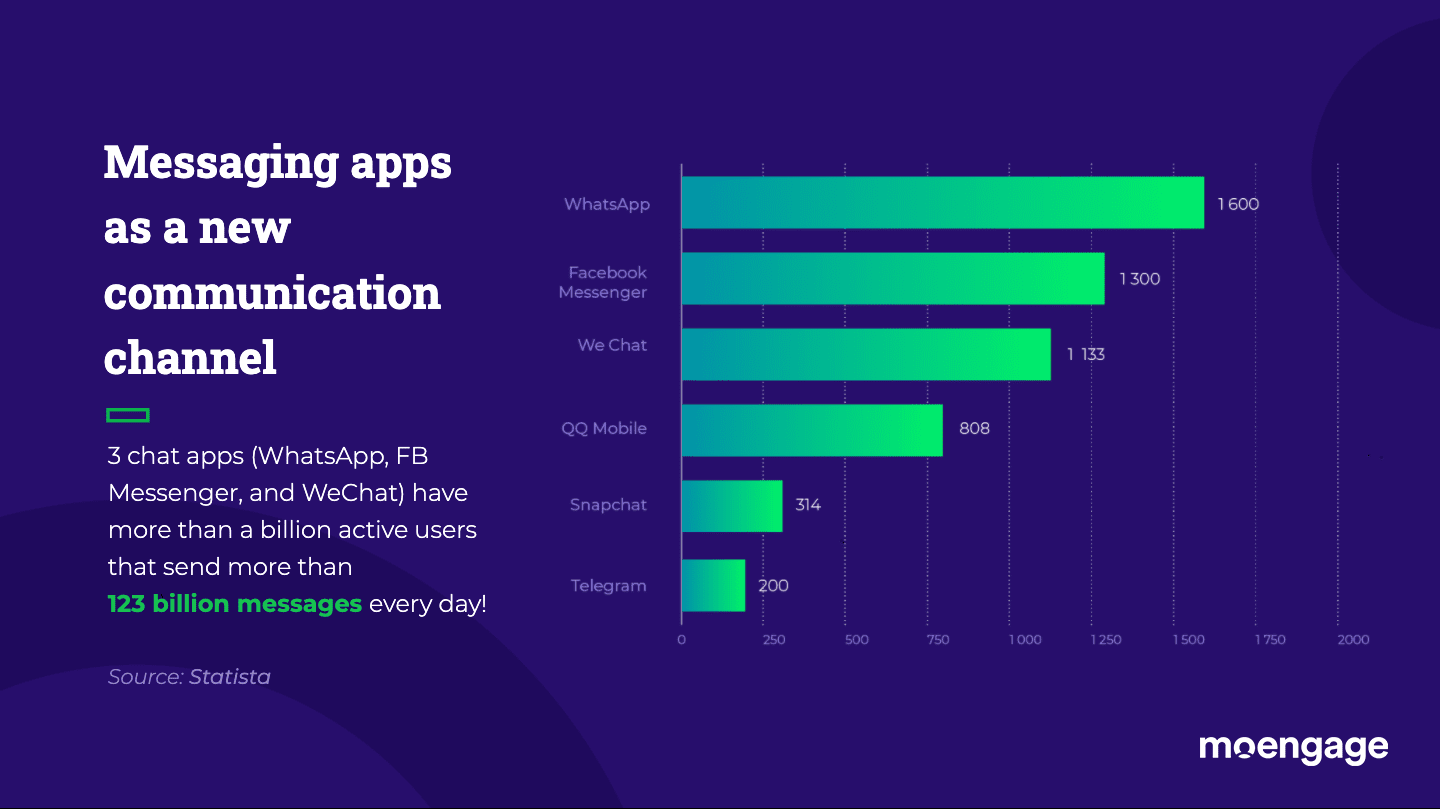Mobile App Retention: In-depth Insights for E-commerce, Travel and Hospitality

Reading Time: 7 minutes
We recently analyzed over 10 million e-commerce and travel app users in India and Southeast Asia and stumbled upon some staggering trends about mobile app retention. In this article, you will find the insights and the strategies needed to retain mobile app users from Travel & Hospitality and E-commerce industries.
| Bonus Content
👉 The Complete Growth Strategy [Download Handbook] 👉 E-commerce App Retention Trends India [Download Ebook] |
India and Southeast Asia are a gold mine for data-driven mobile app marketers
There has been a sudden boom in smartphone usage in both India and Southeast Asia in the past few years. There are two primary reasons for this:
- more affordable smartphones
- increased mobile online connectivity
Samsung, Xiaomi, Oppo, and One Plus have all released multiple devices at affordable prices. At the same time, service providers have successfully penetrated many of the under-serviced areas in these regions.
Did you know that India has the highest mobile-first online population, with 74% of web pages accessed via mobile phones? The smartphone audience in India and Indonesia is more than four times the desktop audience.
India and Southeast Asia are mobile-first societies
India and Southeast Asia have leapfrogged the desktop phase and have far surpassed North America, Europe, and the Middle East in the number of mobile users. If you’re a data-driven marketer, then the data from these regions should define your app retention trends and benchmarks.
App retention benchmarks for the E-commerce industry
According to our research, over 56% of e-commerce app users uninstall their apps within the first week of install, and about 23% of them do it within 24 hours! This means e-commerce apps are losing more users than they are acquiring in a week.

As an e-commerce marketer, you’ve got to be cautious when dealing with new users. Here is how you can retain more users and beat the industry benchmark:
3-step strategy to retain e-commerce app users
- Track acquisition data. To run campaigns, you need data. By collecting acquisition data, you can identify which segment of users have installed your app from which ad campaign and platform. You can then leverage this information to provide a seamless onboarding experience to your new users.
- Personalize onboarding experience. User experience plays a huge role in mobile app retention. A bad UX leads to higher uninstall rates, which result in a higher CAC (customer acquisition cost) for your next set of users. Once you know what product your user is interested in (thanks to the data you gathered in the previous step), personalize the onboarding experience. Instead of asking a user to search or a product after install, give them a list of options for the product(s) they are interested in.
- Run goal-specific campaigns. Most often, this is where marketers fail to make the most out of their newly acquired users. Different users have different objectives in mind when they install your online shopping app. We recommend that you run campaigns with two goals – sign up/register and complete the first purchase.
Take a look at Mobile App Retention: Benchmarks, Strategies & Best Practices
App retention benchmarks for the Travel & Hospitality industry
Our study showed that about 27% of travel app users uninstall their apps within the first week of install.

App uninstall numbers are higher for online shopping apps than travel apps. Due to aggressive competition and varying price ranges in the e-commerce industry, people have more alternatives for the same product on multiple platforms and prefer purchasing the least expensive one. On the other hand, the price ranges on travel & hospitality apps don’t differ by a considerable margin.
How does app retention vary with city tiers?
Both e-commerce and travel industries show the same trend – tier 1 cities have higher app retention than tier 2 and tier 3 cities.

The primary reason for this is a lack of localization and hyper-personalization. According to Wikipedia, English is the first language of only 0.02% of the population in India, and only 10% of Indians speak English! Similarly, the number of English speaking users in Southeast Asia from tier 2 and tier 3 cities is considerably lower than tier 1 cities.
If you are communicating with all your users in English, you’re bound to lose users in tier 2 and tier 3 cities to your competitors. By not leveraging the power of vernacular languages to send push notifications and text messages in your users’ native languages, brands are losing out on more than 2.5X conversions!
The impact of user sessions on app retention
Once again, both e-commerce and travel apps show a similar trend – as the number of user sessions increases, app retention increases proportionally.

How do I increase app user sessions?
Here are some tips to get your users to use your app regularly:
- Capture rich data. When it comes to mobile apps, the major difference between data and rich data is event attributes. For example, if a person has added a product to their shopping cart, you should track what category this product is in, what the price is, and what other products the user viewed before purchasing.
- Create advanced user segments. This is very much essential if you want to increase the engagement of your app. Leverage user behavior and the data you’ve collected to create advanced user segments. This will ensure your communication to every user is relevant and actionable.
- Leverage communication channels. Make sure your campaigns include SMS, emails, push notifications and retargeting ads on social media. By increasing the touchpoints, your brand is consistently present in your users’ minds. This way you’re not only increasing brand loyalty but also reducing app uninstalls.
- Use machine learning. Artificial intelligence and machine learning play a huge role in coming up with relevant recommendations. This could either be product recommendations or travel destination recommendations. Machine learning algorithms can be used to look at user behavior data, learn the preferences of every individual user and then send relevant recommendations. You can also use machine learning to predict the right time to send notifications to optimize click rates and conversions. If interested, take a look at how to Boost App Monetization and Engagement with mobile marketing automation
Another proven way of getting users to open your app regularly is by leveraging the power of bite-sized content. If you’re from the travel industry, you can create short videos or interactive graphics on your app. The topics could be ‘Top destinations to go to during summers’ or ‘Five food destinations for your inner foodie.’ E-commerce app marketers can run seasonal campaigns through content like ‘Best gift ideas this Christmas for your loved ones.’
As a bonus, the content you create will also act as a channel to convert more users, so keep in mind that the content you create for them is actionable! You can also leverage emails to share this with your users and deep-link it to your app.
How do push notifications impact app retention?
E-commerce and Travel & Hospitality app marketers can leverage the power of push notifications to increase user retention. Our study showed that as the number of notifications increase, app retention rises steadily. However, there is a catch!
Look at the uninstall trends for e-commerce apps:

If you notice uninstall rates increase slightly after two push notifications. We believe two push notifications is the sweet spot, and any more will make your users feel you’re spamming them.
Here is the impact of push notifications on travel & hospitality app retention rate:

Similar to e-commerce apps, app retention decreases after two push notifications are sent to travel app users.
To summarize, two is the optimum number of notifications required to retain e-commerce and travel mobile app users.
Tips for using messaging apps for brand communication
Three messaging apps, Whatsapp, Facebook Messenger, and WeChat, have more than a billion active users. And on these three apps, more than 123 billion messages are sent daily!

Marketers must remember that billions of people using these messaging apps use it to have private conversations. Nobody wants to receive promotional messages and advertisements.
Instead of sending sales announcements and offers, use this communication channel for customer support (to update ticket status) or to share transactional information (like receipts and booking confirmation).
You can also use messaging apps to reach out to users who haven’t yet installed your app but have done a transaction online, or have uninstalled your app but still interact with your website.
Conclusion and key takeaways
- Over 56% of e-commerce app users uninstall their apps within the first week of install, and about 23% of them do it within 24 hours. Retain more users by tracking acquisition data, personalizing onboarding experiences, and creating goal-specific campaigns.
- About 27% of travel app users uninstall their apps within the first week of install. The reason behind the stark difference in uninstall numbers in both these industries is the aggressive competition and varying price ranges in e-commerce apps that you don’t see in travel apps.
- Tier 1 cities have higher mobile app retention than tier 2 and tier 3 cities in India and Southeast Asia. To increase retention in these cities, localize your communication by using vernacular languages.
- As the number of user sessions increases, app retention increases proportionally. Increase engagement by creating bite-sized content. Also, capture rich data, create advanced user segments, leverage communication channels, and use machine learning for recommendations.
- Two is the optimum number of notifications required to send to e-commerce app users for maximum retention.
- Two is the optimum number of notifications required to send to travel app users for maximum retention.
- Whatsapp, Facebook Messenger, and WeChat have more than a billion active users. Instead of sending sales announcements and offers, use messaging apps for customer support or to share transactional information.








